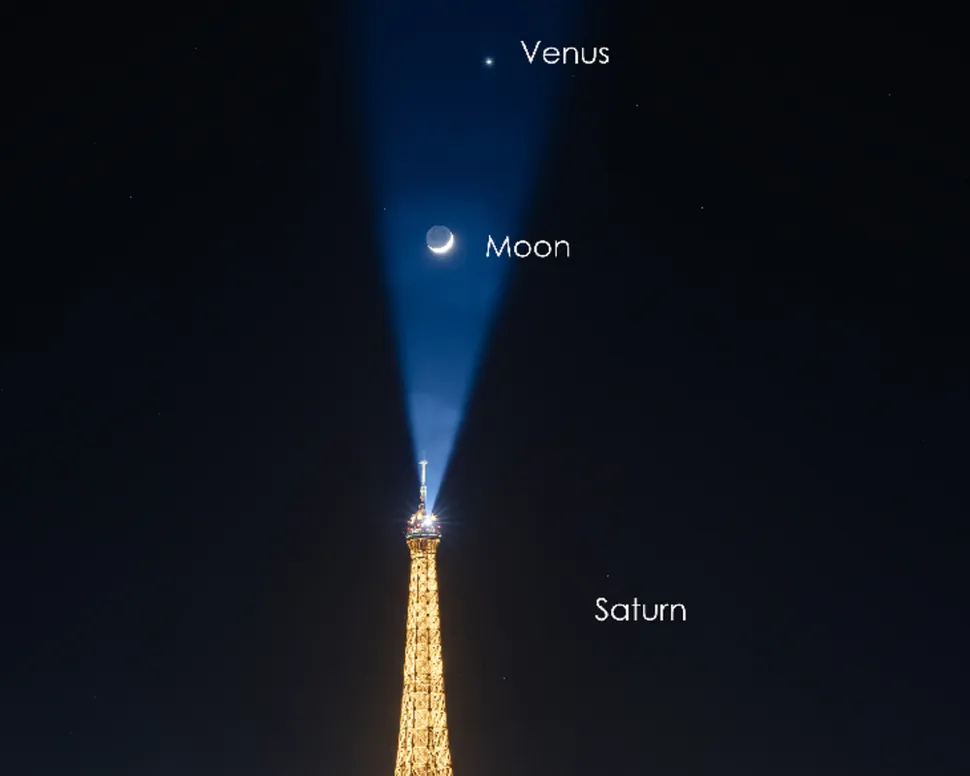A breathtaking celestial event recently graced the skies of Paris, as French astrophotographer Gwenaël Blanck captured a stunning image of Venus and the crescent moon shining brightly above the iconic Eiffel Tower.
The captivating scene was a result of a rare “parade of planets” that has been drawing the attention of skywatchers worldwide.
The photograph, taken on the evening of February 1, at around 8:00 p.m. local time from the banks of the Seine River, captures the moon and Venus in almost perfect alignment, with a beam of blue light emanating from the top of the Eiffel Tower.
The result is an awe-inspiring scene that contrasts the beauty of the cosmos with the luminous Parisian landmark.
Blanck, who posted the image on Instagram, explained how the rare planetary alignment made it impossible to miss. “This is one of the rare celestial events that make people look up even under light-polluted skies,” he shared.
The striking sight drew the admiration of both tourists and locals as they paused to gaze at the extraordinary conjunction. In addition to the moon and Venus, Saturn also made an appearance in Blanck’s photograph, though it was less visible to the naked eye.
Saturn appears as a faint dot to the right of the Eiffel Tower, obscured somewhat by the city’s light pollution. “The Moon (with a beautiful Earthshine) and Venus could not be missed, but Saturn was way more difficult to see,” Blanck noted in his post.
The phenomenon of Earthshine, visible on the moon during a new moon phase, added a gentle glow to the darker side of the moon, making the scene even more mesmerizing.
Earthshine occurs when sunlight reflects off Earth’s surface, illuminating the moon’s dark side, creating a soft glow that enhances the beauty of the lunar surface.
This event is part of a much larger “parade of planets,” where a series of planetary alignments are taking place over the course of several weeks.
As the planetary parade progresses, five planets — Mercury, Venus, Mars, Jupiter, and Saturn — will all be visible to the naked eye. Although Uranus and Neptune are also in the sky, they remain out of reach for casual observers, requiring telescopes to be seen clearly.
The planetary alignment will reach its peak in late February and early March, when all seven planets — including the two outer gas giants, Uranus and Neptune — will align in a nearly straight line along the horizon.
This rare sight is one that won’t be seen again until October 2028, making this a once-in-a-lifetime opportunity for stargazers.
For those eager to witness the parade of planets, Venus will stand out as the brightest planet in the night sky, making it easy to spot, particularly when it is positioned near the moon.
The other planets, while visible, will require a telescope or binoculars to view in their full glory. Stargazers are advised to find a location with minimal light pollution to get the best view of this awe-inspiring celestial event.
This rare planetary parade has sparked the curiosity of both seasoned astronomers and casual skywatchers alike, adding a touch of magic to the February skies over Paris and beyond.



